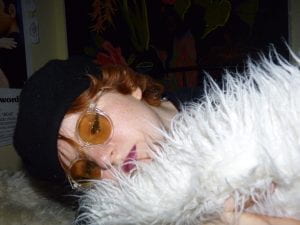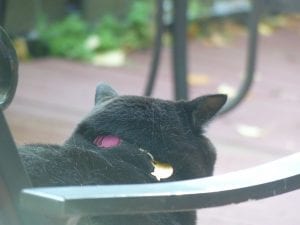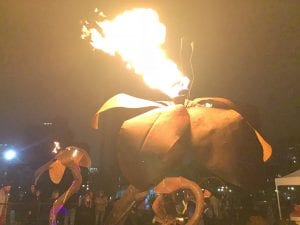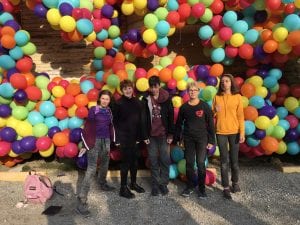Hey there! I’m back again with a post regarding a topic that we’ve been working on for quite a while in Humanities… as all things, it is finally drawing to a close. This is our Metaphor Machines unit.
To start off, we were given a driving question: “How do ideas drive change?” This related to many of the things we learned about and discussed in this unit. An idea is a spark, and if you nurture this spark it can grow and change into something so great or so horrible, but either way is is change and the process is the same. Our ideas for the following project that I am going to explain were abundant, so we had to narrow them down to fit each part of the project.
Hence the name, to put it simply, we had to build a Rube Goldberg machine that was a metaphor for a certain revolution that each group got assigned. This was the biggest part of our Metaphor Machines unit. My group members were Lucy, Nik, and Kyle, and our Revolution was the American Revolution. To start off, we did some research about the Revolution and learned about Crane Brinton’s Theory of Revolution. He speaks of dividing each Revolution into four stages; the Incubation Stage, the Moderate Stage, the Crisis Stage and the Recovery Stage.
The American Revolution fits this theory quite perfectly; the rebellion against the control of the British Monarchy and the founding of a new government, and in this case, a new country. I love learning about history, and knew a bit about the Revolution before we started the project, but researching about all of the clever and interesting things that the Patriots did to fight for their freedom was quite intriguing.
After we narrowed down the list of facts about the main events that happened in the Revolution to seven pivotal occurrences, we began to think of metaphors for each big event in the Revolution. Each part of the Revolution had to be represented as a machine sequence in our contraption. This is where the metaphor part of our project comes in. It was a bit difficult relating the Revolution to each part of the machine in a way that makes sense but also has the machine function, but we had plenty of ideas to consider. After we roughly thought up a draft of our machine we sketched it out to really see what we were working with. Our materials included a small backboard that the entire machine had to fit and operate on, so after finishing the sketch I made a diagram of the machine in Procreate and began to think about what other components were to be included. Lucy, with the help of Nik and Kyle and I, then made a large diagram of the machine that was supposed to represent the exact size of every part accurately (the result was somewhat different). We ended up changing many of the measurements when actually building, but it was a good reference.
After all of the drafting was pretty much finished, we moved downstairs to begin the assembling of our machine. But there’s one catch… our machine had to be steampunk themed! It started off as simply learning about the Industrial Revolution, which is where a lot of innovation with machinery occurred; thus leading to another part of our unit— a novel study on a book called Leviathan, by Scott Westerfeld. Leviathan is set during World War 1, and is the story of a world that is filled with extremely advanced and amazing machinery. The idea of steampunk talks about technology if it developed in a different direction, and into a planet where everything is decorated with brass gears and exposed equipment. Leviathan takes one side of the war and makes it into an army, filled with large walking machines and apparatuses to battle the opposing party. The rival group draws from the fantasy side of steampunk, and creates beasts and creatures large and small that are composed of life threads dissected from a variety of animals. This book helped us learn a bit more about steampunk, and was overall a great story (so far… I must read the others in the series now!).

3209107 / Pixabay
Steampunk is common in the sci-fi and fantasy genres, and I found it so cool to see how we celebrate this idea, though festivals and literature and art. It definitely fits in with our unit question, as the whole concept of steampunk is that having this idea drives technology on a completely different course. But we also had to fit it in with our machines.
To start off the building process, we spray painted our backboard completely black, and I painted gears onto it, which gave it a steampunk feel. We also began building the separate parts of our machine and spray painting each part silver, or gold, or bronze. As each fragment of the machine came together, it began to look more and more amazing! We used mostly cardboard to build the ledges and smaller bits, and attached them to the backboard with hot glue. This was the most tedious part of the project, as we had to alter little things to make sure it all worked perfectly.
For the Scimatics side of the project, we had to include some sort of circuit to recognize our learning about circuits and electricity in general. In our machine we use 2 parallel circuits, each with three lights. The first one was especially hard to rig, because we had to make sure that a domino pressed two finicky pieces of tinfoil together to turn on the lights, as well as knocking down a ball to trigger the following section. Nik and I had to connect each light with a soldering iron and wrap the tinfoil around the ends of the wires, while Lucy helped position the flaps of tinfoil correctly. The second circuit was almost as hard to situate, as we attached one tinfoil scrap to the bottom of a cup that proceeded to be pushed together with the other scrap, which turned on the set of three lights at the very end of our machine. I think the circuits were probably the most challenging part of our machine to set up perfectly.
After everything was fully assembled, it took a couple tries to get it to run as wished, but it worked! The group’s efforts definitely payed off, but we weren’t complete yet. Our final task was to make a video explaining about our machine and Revolution. We filmed several run-throughs of our machine and completed a first draft of our film.
In PLP what we like to do is reflect on our work and think of how to improve upon each try. For this video, it was difficult to sort out who was doing what, but we managed to collectively finish it. A tedious task that we also had to complete in order to make sure that our video had adequate visual aids was to find images, but of course, these had to all be sourced in our description, so copying out each link wasn’t very fun. However, I am proud of the draft that we came up with, as it was completed within a small amount of time. Unfortunately, due to technical issues, we weren’t able to finish a final copy, as our audio clips were lost and made the video almost impossible to compete without basically starting over. This in no way means that I’ve no ideas on what we could have improved! An important aspect of making films and videos is the audio; we wanted to change the music, as it didn’t fit the theme at appropriate times, and we also wanted to re-record some of the voiceovers that were fuzzy or cut off at the beginning and/or end. We also wanted to make sure that our images stayed on the screen for a long enough amount of time that they were clearly intelligible. I drew some historical figures that were relevant to the topics in our Revolution but not mentioned verbally in our video; we wanted to remove them as well due to the lack of explanation as to what role they actually played in our Revolution (but I’ll put a couple of them in this post!). I’m glad to say that even though we couldn’t make a final film, we definelty know exactly what would have happened with it.
Our Metaphor Machines unit has really been a wild ride. So much effort has gone into building this awesome machine, reading, and dreaming up different concepts of what we could do to make everything even better. Our projects began as simple ideas, but we drove them to change into these amazing contrivances. There was a lot to learn, past the simple building of the machine, reading of the novel, and studying of the American Revolution and Industrial Revolution— I love having a question that allows you to delve deeper into the non-tangible meaning of a project.
So, how do ideas drive change? From what I’ve gathered during our unit, ideas drive change by giving people the persistence to carry on and bring their plans to life. When you have an idea that is creative and inspiring enough, you begin to feel as if you must not let this amazing proposition go to waste. You become motivated to learn everything that you can in order to make it happen. To bring the idea to fruition. Only when you act on these intentions do you realize how much can be changed, and therefore, how much an idea can drive change.
If you’ve gotten down to here, thanks for persevering and reading this very extensive blog post. I am so excited to see what’s to come in Humanities, so stay tuned!





















Leave a Reply